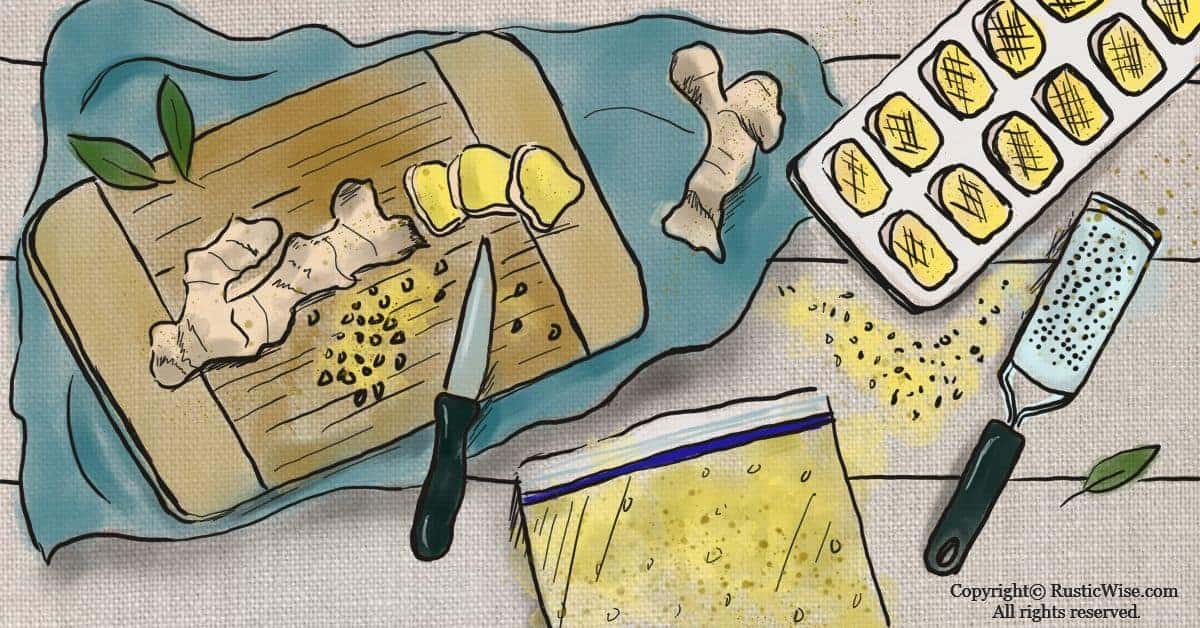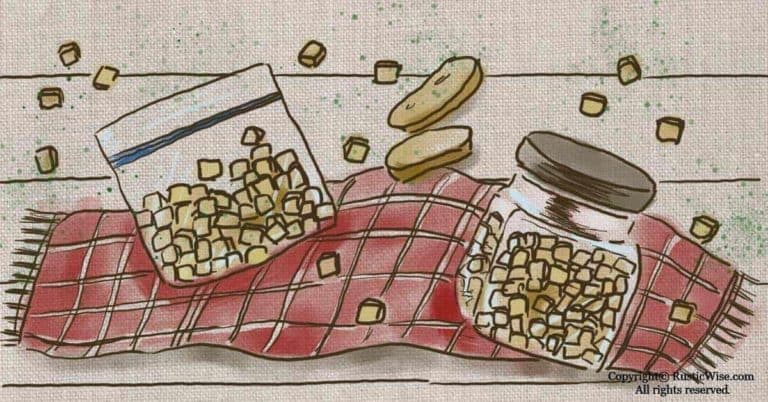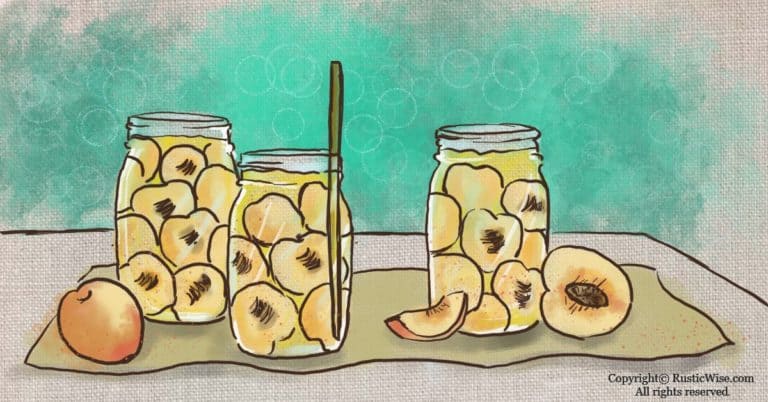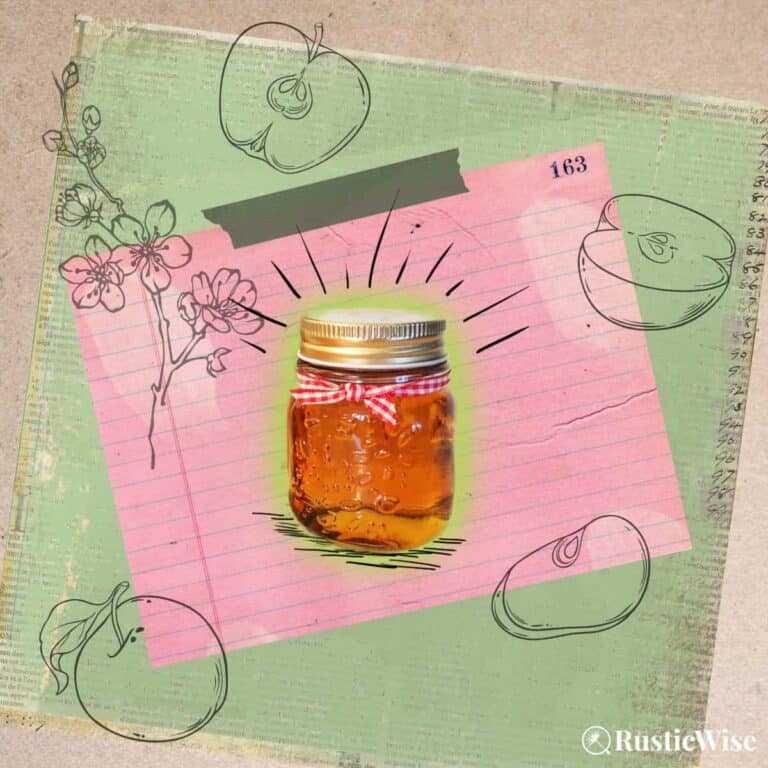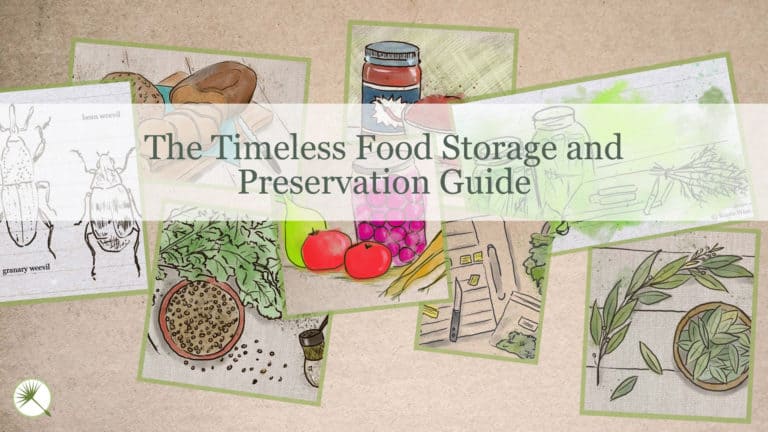How to Freeze Fresh Ginger Root 5 Ways
Ginger is an amazing root that not only tastes delicious, but also has many health benefits. Unfortunately, fresh ginger often goes to waste. Most recipes only call for a teaspoon of grated ginger, or a few slices, leaving the rest of the fresh root to wither or rot. We’ll show you how to freeze fresh ginger five ways to prolong its shelf life. Having ginger ready-to-use makes meal prep so much easier (because let’s face it, grating or slicing ginger is kind of a pain!).
While you can use dried ground ginger, it doesn’t provide the same zing and warmth of fresh ginger root. If you have ginger sitting around, don’t let it go bad—learn how to freeze your fresh ginger properly.
Why freeze ginger?
What’s the point of freezing ginger? It extends the life of your ginger by months! You can also be more creative with it when you’re cooking, too—incorporating a bit of ginger to a curry dish, stir fry, or a sweet treat is much easier when it’s all ready to go.
Depending on where you live, fresh ginger can be hard to come by in the winter months. Keeping a stash of frozen ginger ensures you never run out of this versatile root.
If you’re planning to use your entire ginger root within a few days, you can store it in a cool dry place on your countertop, or in a pantry.
Like other hardy roots, ginger can also be stored in the refrigerator to extend its shelf life. Store ginger in the fridge in a resealable plastic bag for several weeks. Ensure ginger is bone-dry before storage—any hint of moisture results in mold growth or spoilage.
If you’re like me and don’t go through a whole root quickly enough, it can spoil in the blink of an eye. This is where freezing comes in handy!
When frozen, ginger root can last for months. But like other frozen foods, it’s best used within 6 months for best flavor.
Tip: The great thing about frozen ginger is that it’s easier to grate than fresh ginger. If you’ve ever tried to peel fresh ginger, it has fibrous strands. Frozen ginger has none of this.
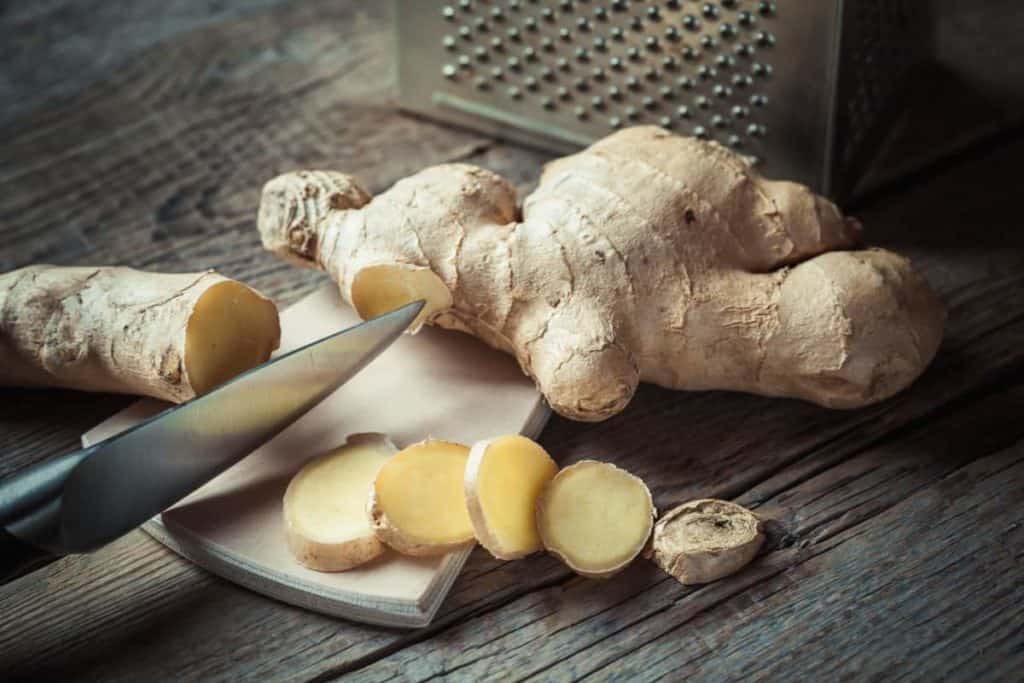
To peel or not to peel?
Many people peel ginger as a matter of habit. Did you know that ginger skin is perfectly edible?
So if you’re tired of peeling off the skin, save yourself the extra step and leave the skin on. Just make sure to wash it well first, then pat dry. Just as other foods with edible skins such as apples or grapes, wash and scrub well for at least 30 seconds.
Many recipes call for finely chopped, grated or puréed ginger. If you’re planning to leave the skin on, you won’t notice it much.
What does ginger peel taste like? Well, it tastes an awful lot like the ginger flesh, perhaps slightly milder.
Not everyone is a fan of ginger skin though. The skin is rough and papery with protruding bumps. So, if this turns you off, feel free to peel ginger. You may decide to peel the skin if you’re using larger chunks of ginger. But this is really a matter of personal taste and preference.
Tip: You may have heard of this spoon trick before, but I’ll share it with you in case you haven’t. To quickly peel the skin of ginger without a lot of waste, use the edge of a spoon (concave side facing the root). Make short, quick strokes to remove the skin. It’s easier to use a spoon to navigate the bumpy surface of ginger root—much more so than a peeler or paring knife. You’ll also end up wasting less ginger flesh by peeling with a spoon.
How to freeze fresh ginger root 5 ways
With anti-inflammatory and antioxidant properties, ginger is a culinary powerhouse for both its flavorful profile and its health benefits.
As we mentioned above, ginger root is fine with skin on or off. If you’re leaving the skin on, be sure to thoroughly wash first before freezing. Allow to air dry, or pat dry with a clean towel.
And when freezing or preserving any type of food, the fresher the better. Only freeze good quality ginger and remove any dried or unsavory parts first.
Remember to label and date your ginger before placing in the freezer!
So without further ado, here are several ways to freeze this culinary powerhouse. Try one method, or use multiple methods to stock your freezer with ginger options!
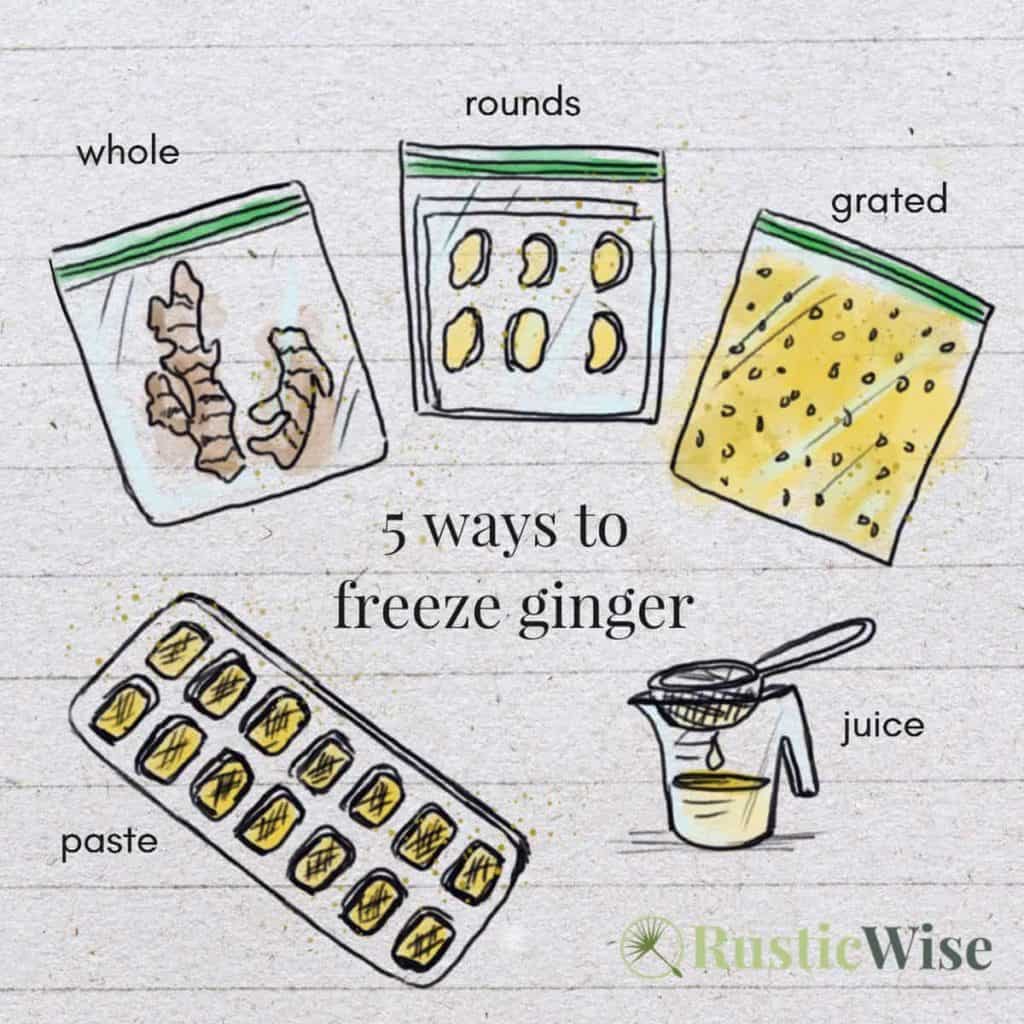
1) Whole
The easiest way to freeze ginger is whole, skin and all. Purchase fresh ginger roots and store them whole in a plastic freezer bag. Squeeze out any excess air. They’ll keep up to one year this way.
The skin works to preserve the flesh for longer. To use, simply cut off a chunk or grate as needed. There’s no need to thaw beforehand.
Bonus—frozen ginger is much easier to shred or grate than fresh ginger. Use a fine grater or microplane to prepare your ginger.
2) In rounds or coins
If you prefer smaller pieces, cut ginger root into flat rounds or coins. How thick you cut it is entirely up to you.
Place sliced ginger in a single layer onto parchment paper. You can create multiple layers by placing parchment paper between.
Store in freezer safe bags or airtight containers.
These bite-sized chunks are easy to use—grab as many as needed and leave the rest in the freezer. Thaw slightly before using.
3) Grated
Many curries or Asian recipes call for finely chopped, or grated ginger. To save time on meal prep on busy weeknights, make a batch of frozen grated ginger.
- Wash and peel ginger.
- Finely grate using a grater, microplane, or a food processor.
- Pack into a plastic resealable bag as a thin, flat layer. This ensures you’re able to snap off a piece as needed. (The first time I froze grated ginger, I froze it into a large clump; needless to say, I had a hard time breaking off a piece!)
- Squeeze out excess air and place on a flat surface in the freezer until hardened.
To use, just snap off a chunk of grated ginger as needed. Easy-peasy!
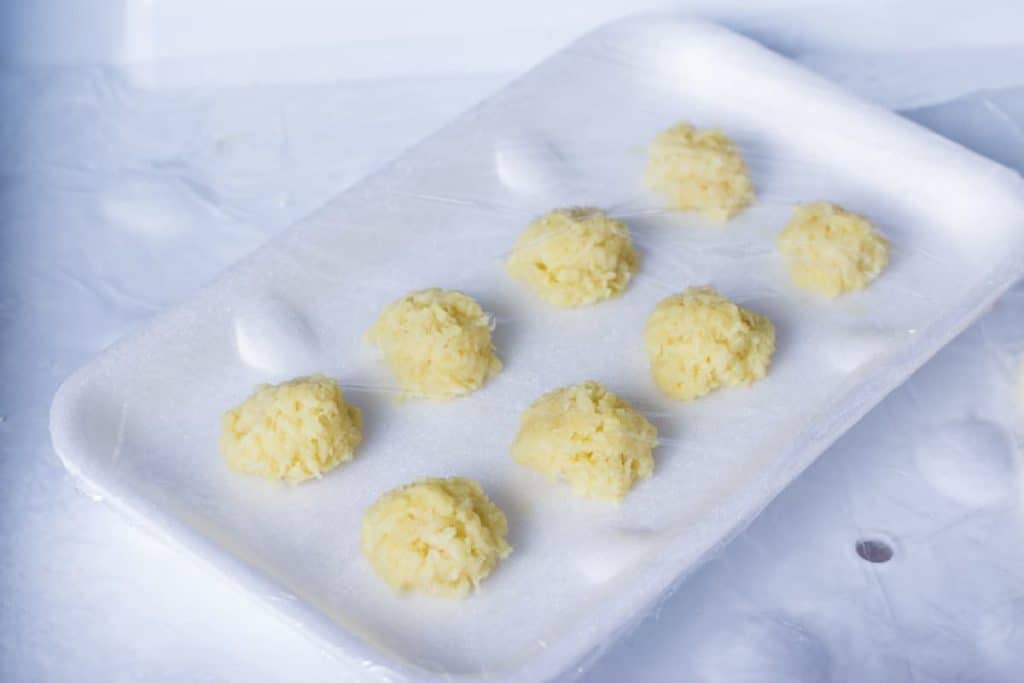
4) Make a paste
Ginger paste is versatile and makes adding a bit of zing to your culinary creations a breeze. Mix into savory dishes, add a new flavor dimension to desserts, or spritz up cold or warm drinks.
If you have a few ice cube trays, or small silicone molds, you can freeze individual portions using these. Otherwise, you can freeze individual portions onto a baking sheet.
- Wash, peel (optional), chop into pieces, and add ginger to a food processor. Add a splash of water. Purée until well-blended and the desired consistency is reached.
- Line a baking sheet with parchment paper. Portion out chopped ginger by the teaspoon. Freeze until hardened. OR, pack into ice cube trays or silicone molds.
- Transfer frozen individual portions into a plastic bag or air-tight freezer-safe container if not using trays or molds. Otherwise, place a cover over your trays, or slip into a resealable plastic bag before freezing. This protects the food and prevents freezer burn.
To use your ginger paste in cooked dishes, simply pop out an individual portion and add directly to a pan. The heat will defrost your ginger paste cube.
For use in cold dishes, thaw before using.
Option: If you make a lot of dishes that call for both ginger and garlic, make a paste using both ingredients. Simply add a few cloves of garlic to your food processor and blend until smooth.
5) Make frozen ginger juice
The brilliant idea to make frozen ginger juice comes from the book, Canning for a New Generation by Liana Krissoff (2). Ginger juice is great for marinating meat in Asian dishes, or adding warmth and spice to drinks.
To make frozen ginger juice, you need to essentially make a paste using the instructions above, but take it a step further to “press” out the juice.
- Wash, peel (optional), chop into pieces, and add ginger to a food processor. Add a splash of water. Purée until well-blended and the desired consistency is reached.
- Pour the purée into a fine sieve over a large glass measuring cup (or similar pourable container). Press juice from the purée into the measuring cup. Alternately, you could use a cheesecloth and “squeeze” out the ginger juice.
- Pour the ginger juice into ice cube trays or silicone molds and place in freezer.
Pop out cubes of ginger juice as needed. They make great alternatives to regular ice cubes if you want to spice up drinks!
Where do you buy ginger?
Most farmers’ markets or Asian grocery stores are good places to buy fresh ginger root. Most larger grocery stores carry ginger root too, although the selection tends to get sparse over the winter months in my neck-of-the-woods.
Does frozen ginger have fewer nutrients?
According to the U.S. Department of Agriculture (USDA), “The freezing process itself does not destroy nutrients.”
However, over time, your frozen food may develop freezer burn, or have an altered color, texture, or taste. While in theory frozen food may last indefinitely, to preserve quality use within several months. And to prevent freezer burn, remove excess air from plastic bags, or use an airtight container with lid.
The optimal temperature for a freezer is 0 degrees Fahrenheit (-18 degrees Celsius).

References:
- Food Network, Hey, Do I Really Have to Peel Ginger?, https://www.foodnetwork.com/fn-dish/recipes/do-i-have-to-peel-ginger. Accessed June 2021.
- Krissoff, Liana (2010). Canning for a New Generation: Bold, Fresh Flavors for the Modern Pantry. Stewart, Tabori & Chang. p. 70. ISBN 978-1-58479-864-4.
- U.S. Department of Agriculture (USDA), Freezing and Food Safety, https://www.fsis.usda.gov/food-safety/safe-food-handling-and-preparation/food-safety-basics/freezing-and-food-safety. Accessed June 2021.

Author: Theresa Tesolin
Theresa is co-founder of RusticWise. She helps people unleash their inner DIY spirit by encouraging them to get dirty and make or grow something from scratch.

